Few dishes capture the warmth of North Indian home cooking as beautifully as rajma chawal — red kidney beans cooked in a rich, spiced gravy and served over steaming hot rice. At Shalimar Phuket, this comfort meal has become a guest favorite, loved for its balance of flavor, nutrition, and nostalgia. Whether you’re a traveler missing Indian home food or a local exploring global cuisines, our rajma chawal recipe brings the authentic taste of North India to the shores of Phuket.
Though today rajma chawal is synonymous with Punjabi households, the kidney beans themselves originated in Mexico and were brought to India by Portuguese traders in the 16th century. Over time, Indians infused local spices and cooking styles into the dish, creating what we now know as rajma chawal.
In Delhi and Punjab, no Sunday lunch is complete without this hearty meal. It’s more than just food — it’s comfort, tradition, and togetherness in a bowl. At Shalimar Phuket, we’ve recreated that same homely flavor using authentic Indian spices and slow-cooking techniques that honor the dish’s rich legacy.
Ingredients Used in Rajma Chawal
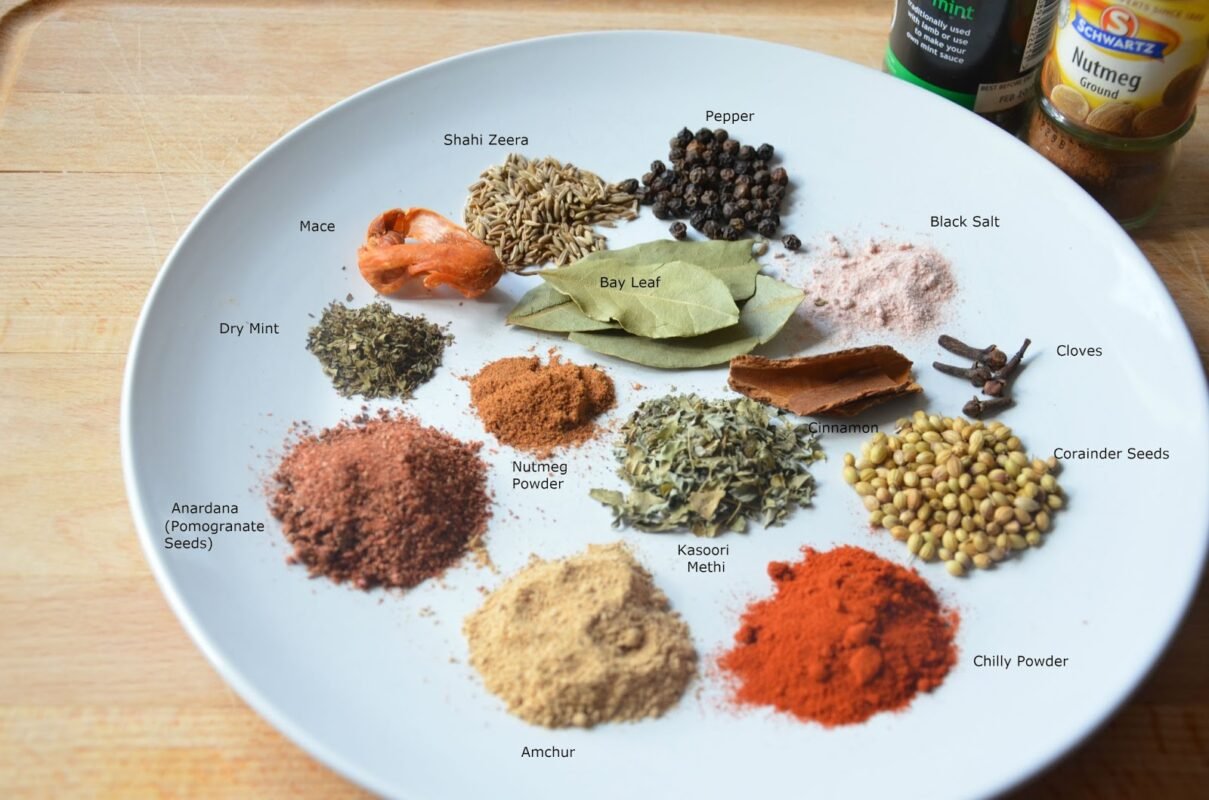
To make the perfect rajma chawal recipe, freshness and patience are key. Here’s what goes into this heartwarming dish:
For the Rajma (Kidney Bean Curry):
- 1 cup red kidney beans (rajma), soaked overnight
- 2 medium onions, finely chopped
- 2 tomatoes, pureed
- 1 tablespoon ginger-garlic paste
- 2 green chilies, slit
- 2 teaspoons cumin seeds
- 2 teaspoons garam masala
- 1 teaspoon turmeric powder
- 2 teaspoons red chili powder
- 2 tablespoons cooking oil or ghee
- Salt to taste
- Fresh coriander for garnish
For the Chawal (Rice):
- 1 cup basmati rice
- 2 cups water
- 1 teaspoon salt
- 1 teaspoon ghee or butter
How to Make Rajma Chawal: Step-by-Step Recipe
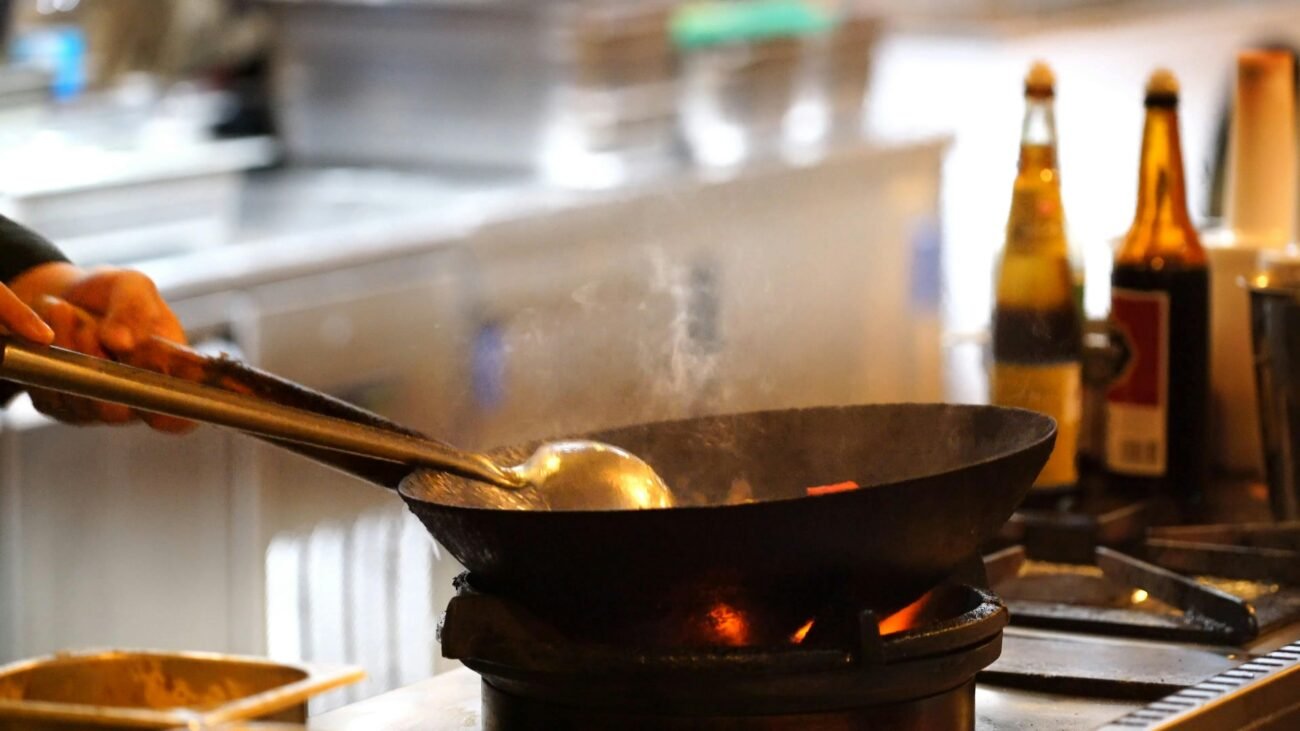
Step 1: Cooking the Rajma
Soak the kidney beans overnight for 8–10 hours. Drain and rinse them well, then pressure cook with fresh water and a pinch of salt for 4–5 whistles until soft.
Step 2: Preparing the Gravy
Heat oil in a pan, add cumin seeds, and let them splutter. Sauté onions until golden brown, then add ginger-garlic paste and green chilies. Once fragrant, stir in the tomato puree and cook until the oil separates.
Step 3: Adding the Spices
Add turmeric, red chili powder, garam masala, and salt. Mix well, then add the cooked rajma along with its water. Simmer for 15–20 minutes on low flame, stirring occasionally until the gravy thickens and flavors combine.
Step 4: Cooking the Rice
Rinse basmati rice under cold water until it runs clear. Boil water in a pot, add salt and ghee, then add the rice. Cook until fluffy and strain excess water.
Step 5: Serving the Rajma Chawal
Serve the hot rajma curry over a bed of steamed rice. Garnish with fresh coriander and a squeeze of lemon for extra zest.
At Shalimar Phuket, our chefs follow this traditional rajma chawal recipe, ensuring every bowl offers warmth and authenticity — just like homemade comfort food.
Why Rajma Chawal is So Popular
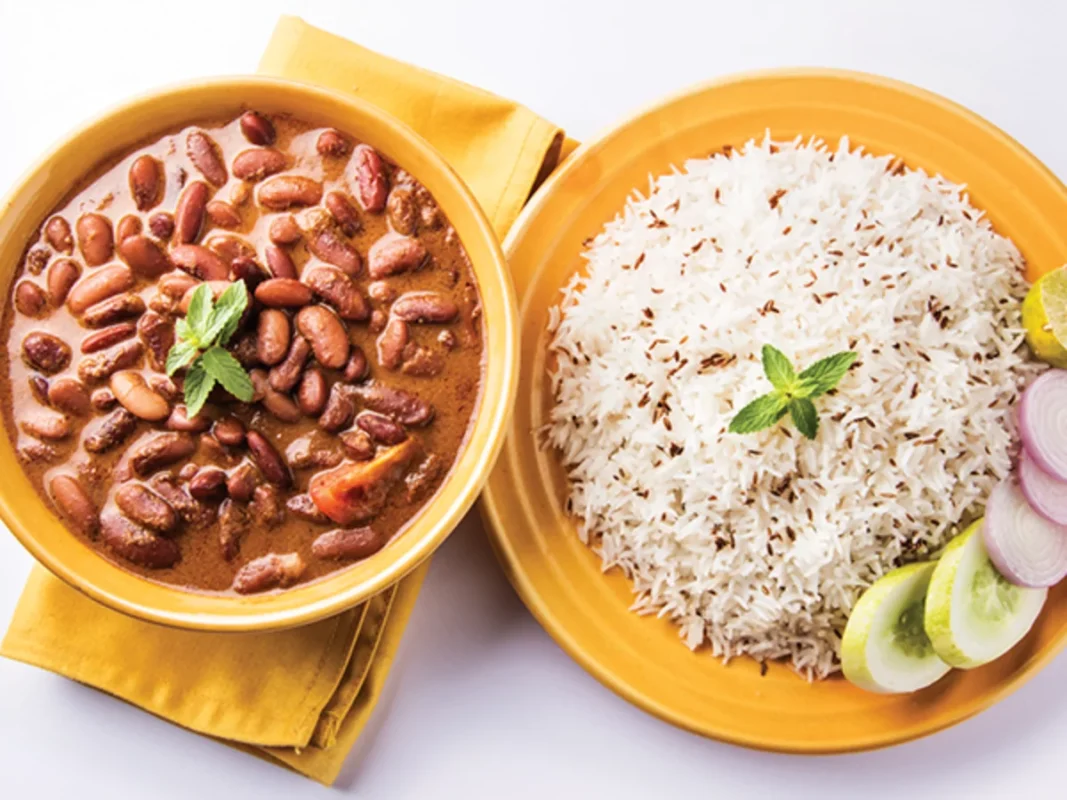
There’s a reason rajma chawal near me is one of the most searched phrases by Indian food lovers abroad — the dish is hearty, wholesome, and soul-satisfying. Its combination of protein-rich kidney beans and energy-giving rice makes it a complete meal.
In North Indian homes, it’s often served on weekends, bringing families together over lunch. For students and travelers, it’s a nostalgic reminder of home-cooked meals. And for food enthusiasts visiting Shalimar Phuket, it’s a delicious introduction to Indian comfort food culture.
Nutritional Benefits of Rajma Chawal
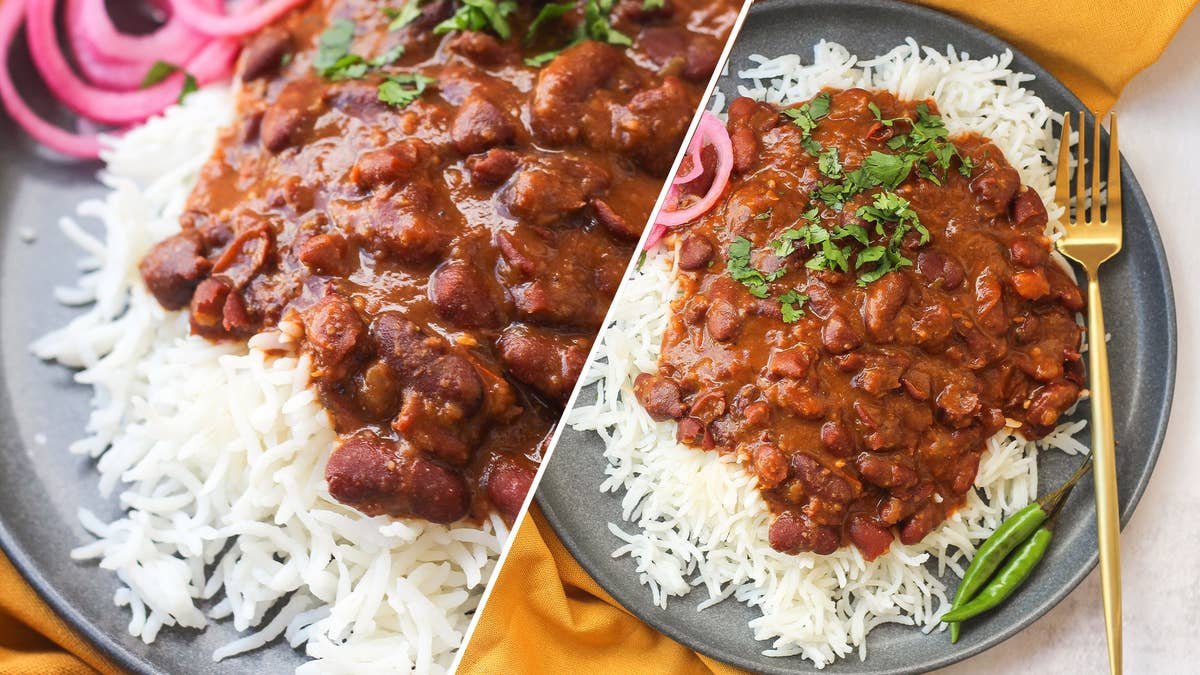
People often wonder, “Is rajma chawal healthy?” The answer is yes — when made with the right ingredients and moderate oil. Rajma (kidney beans) is an excellent source of protein, fiber, and iron, while rice provides carbohydrates for energy.
The rajma chawal calories per serving typically range between 300 to 400 kcal, depending on portion size and cooking style. The dish helps maintain satiety, supports digestion, and provides a balanced mix of nutrients. For vegetarians, it’s one of the best sources of plant-based protein.
At Shalimar Phuket, we prepare rajma chawal with fresh, locally sourced vegetables and minimal oil — keeping it both tasty and nutritious.
Tips and Variations

- Spice Level: Adjust chili and garam masala according to preference. For kids or those who prefer mild flavors, tone down the spice.
- Creamy Twist: Add a spoon of cream or butter at the end for a richer texture.
- Diet-Friendly Version: Replace white rice with brown rice or quinoa for a healthier twist.
- Authentic Punjabi Style: Include whole spices like bay leaves, cloves, and cinnamon for a deeper aroma.
At Shalimar Phuket, we stick to the classic rajma chawal recipe but are happy to adjust spice levels to suit our guests’ preferences — because authentic doesn’t mean one-size-fits-all.
The Comfort of Rajma Chawal at Shalimar Phuket
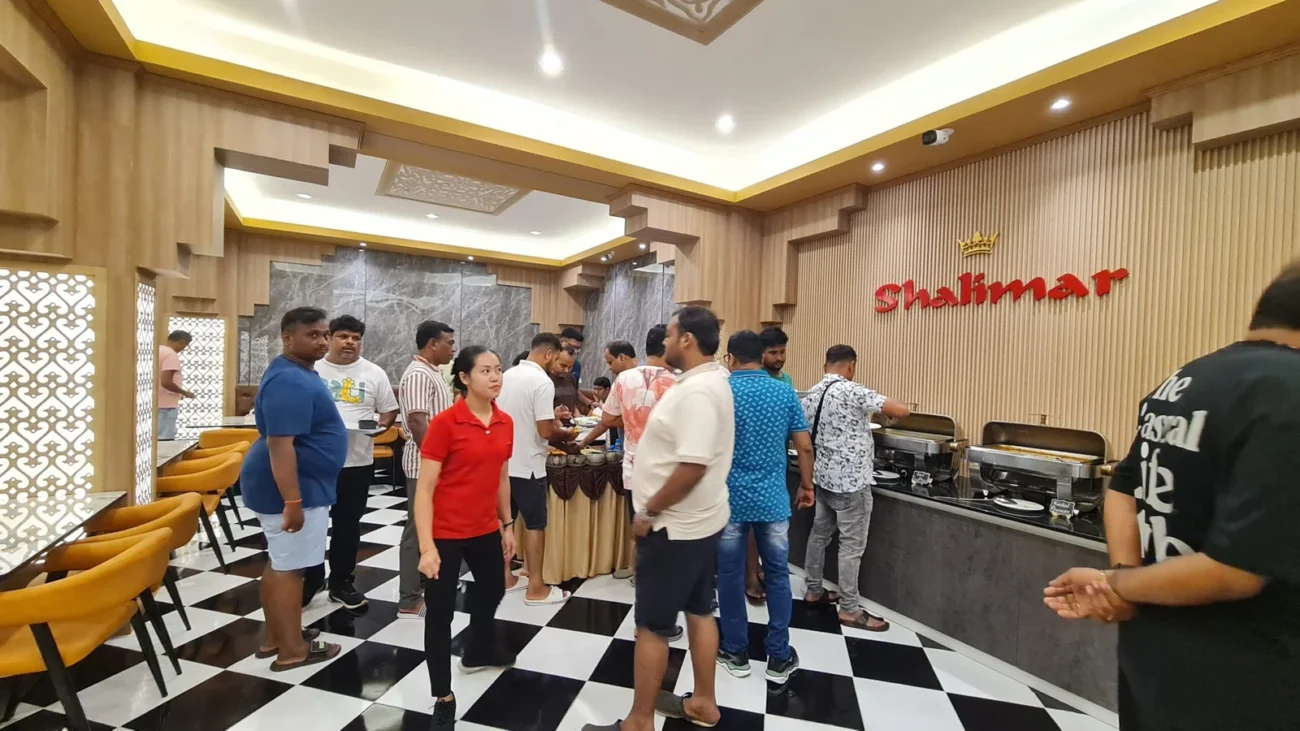
In the vibrant food scene of Phuket, Shalimar stands out for its dedication to authentic Indian cuisine. Our rajma chawal captures the warmth of a North Indian kitchen, cooked slowly to perfection and served with love. Each bite is a journey through tradition, culture, and comfort.
If you’re searching for “rajma chawal near me” while in Phuket, Shalimar is the place to visit. From its rich aroma to its satisfying flavor, our rajma chawal promises a heartwarming dining experience that feels like home.
FAQs
1. How to make rajma chawal?
Soak rajma overnight, cook with spices, and simmer in tomato-onion gravy. Serve hot with steamed rice.
2. Is rajma chawal healthy?
Yes, it’s a balanced meal packed with protein, fiber, and essential nutrients.
3. How many calories in rajma chawal?
One serving contains approximately 350–400 calories.
4. Is rajma chawal good for weight loss?
Yes, when cooked with minimal oil, it’s filling and helps manage appetite — ideal for weight management.

